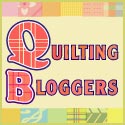So here are a few tips to keep your machine from eating your quilt project.
@ A SHARP new needle on your machine. If you have a dull or burred needle it might be having a hard time getting through your fabric, and thus be pushing it into your machine. At which your machine is saying, "Yum, Yum more fabric!"
@ Leader and Enders - These are pieces of scrap fabric that you fold in half or thirds and stitch over it before your project, stitch off it a few stitches and then start your project under the presser foot. When you come to the end of stitching your project, stitch off a few stitches and then put another piece of folded scrap fabric under the presser foot. Stitch across the scrap, then clip the threads between your project and the Ender. It now becomes the Leader for your next stitching run. Why do these help? Well, you don't need to worry about the thread tails any more!! Also, they have raised the presser foot up off the feed dogs and make enough room for your project to slide nicely under the presser foot and the feed dogs can grab your project nicely and pull it through your machine.
 |
| From To be Filed |
 |
| From To be Filed |
 |
| From To be Filed |
@ Change your Needle Plate. The needle plate is what covers the bobbin area under your project, it is around the feed dogs and has a hole in it where the needle goes through. On most machines that do zig-zag, the hole that the needle goes through is a horizontal slot. This slot allows the needle to go from side to side and create the zig-zag stitch and now days a thousand other fancy stitches. This slot creates space for your fabric to get sucked down into the bobbin area. To help prevent the needle from pushing your fabric down into the needle plate you can change the zig-zag needle plate to a straight-stitch needle plate. This needle plate has just a small round hole for the needle to go through and so there is less room for your fabric to get stuffed down into your machine in the beginning stitches. BEWARE!! Be sure to change back to your zig-zag plate before you try to do anything but a straight stitch! That's what the little red sticker is supposed to remind you of!
.JPG) |
| From 2008-10 |
.JPG) |
| From 2008-10 |
Now check out what Bonnie does with her Leaders and Enders!!!




.JPG)
.JPG) The Teapots came from the LQS and the cherries from WalMart. Yep the background on the cherries used to be black!
The Teapots came from the LQS and the cherries from WalMart. Yep the background on the cherries used to be black!.JPG)










